The three shots above and the three shots below, are, so far as I can tell, of the most common subspecies of Yellow Wagtail, Motacilla flava flava (if I am wrong please correct me, some of the birds with paler crowns might be Sykes’ Wagtail (Motacilla flava beema ), especially, I think, the birds in the top two pictures, the lower of which is pictured closer up in the last picture in the post). When one thinks Yellow Wagtail one thinks of Motacilla flava flava.
The other subspecies of Yellow Wagtail that crossed my path in Kazakhstan actually landed on the lakeshore right in front of several of us birders. There were at least five or six of them and they were accompanied by Motacilla flava flava and White Wagtails. The new subspecies (to me) was Grey-headed Wagtail, or Motacilla flava thunbergi, which sometimes, according to Wikipedia, are also known as Dark-headed Wagtail (though I have not seen this name elsewhere in my googling). I got a shot of some of the thunbergi that is posted below.
So one would think that with the internet as a tool that identifying Yellow Wagtails down to subspecies would be a snap, even for an amateur, right? Wrong! For example, I really don’t know where to classify this bird (my best guess is a female thunbergi):
So, what I learned about Yellow Wagtails is that I shouldn’t even be trying to write a post about Yellow Wagtail subspecies identification because someone who has spent a total of about two weeks in areas where a Yellow Wagtail is even remotely likely to be seen should really leave this type of information to the experts. So, Jochen, Dale, Charlie (anyone else?) please get to it and fix my screw-ups before the internet is polluted with false information (gasp! the horror!). Also, for reliable information written by people who know what they are talking about when it comes to the occurance of different subspecies of Yellow Wagtail in Kazakhstan one could visit the Birds of Kazakhstan page about just that.
*And, actually, under the IOC checklist that I am trying to sort my life list out on Yellow Wagtail already is more than one species, with Eastern Yellow Wagtail (Motacilla tschutschensis) and Western Yellow Wagtail (Motacilla flava) each forming their own species. Unfortunately, I was not far enough east to get to tschutschensis, though, if I ever went to Alaska I would likely see one.
This post has been submitted to Bird Photography Weekly #41. Go check it out!
________________________________________________________________________________________________
My trip to Kazakhstan was made possible by the wonderful folks at Swarovski Optik who sponsored the trip 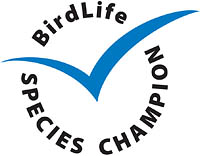 not only to draw attention to their marvelous optics but to the fact that Swarovski Optik is, with the RSPB, the Species Champion for the Sociable Lapwing, a critically endangered species that breeds almost entirely in Kazakhstan. We here at 10,000 Birds, the only blog designated a Species Champion by BirdLife International, salute Swarovski Optik‘s commitment to conservation.
not only to draw attention to their marvelous optics but to the fact that Swarovski Optik is, with the RSPB, the Species Champion for the Sociable Lapwing, a critically endangered species that breeds almost entirely in Kazakhstan. We here at 10,000 Birds, the only blog designated a Species Champion by BirdLife International, salute Swarovski Optik‘s commitment to conservation.
To learn more about 10,000 Birds’ commitment to conservation through BirdLife International’s Species Champion program and what it means to us at 10,000 Birds (or to donate to the program through 10,000 Birds) just click on the nice Species Champion logo to the right.


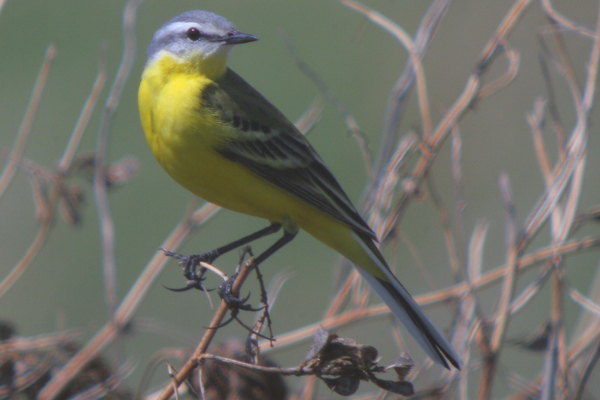
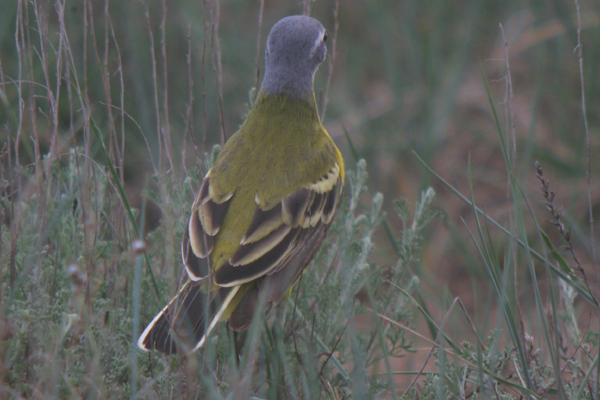

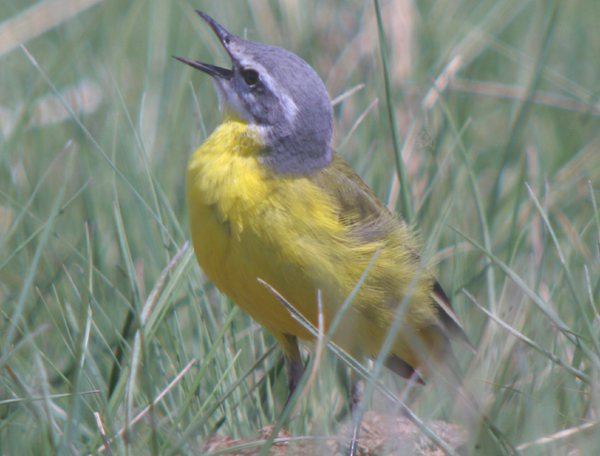
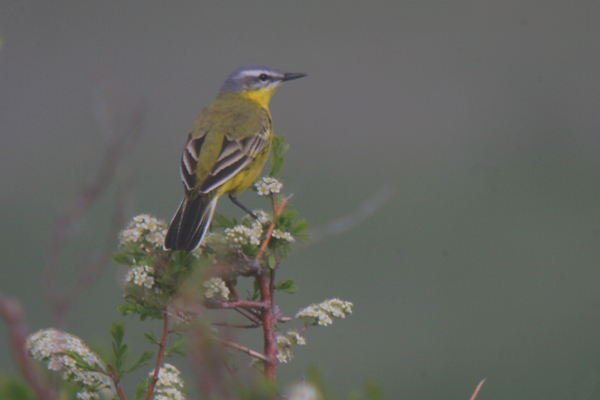
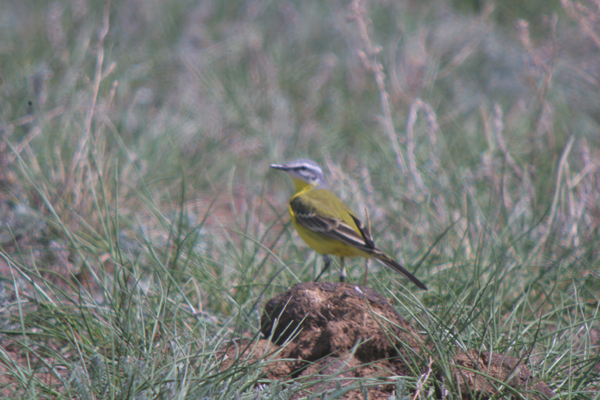
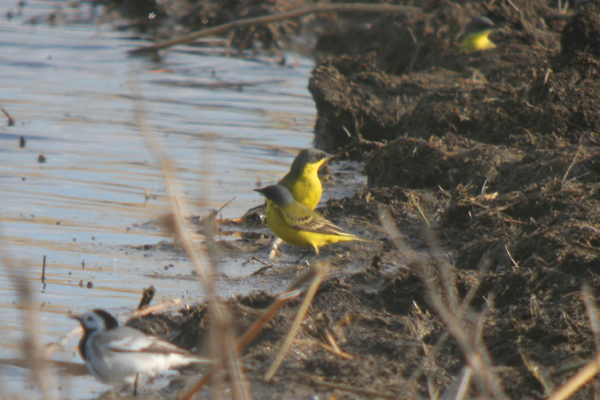
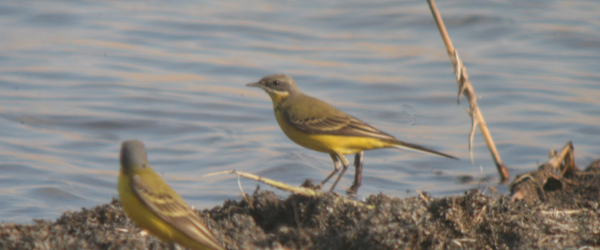
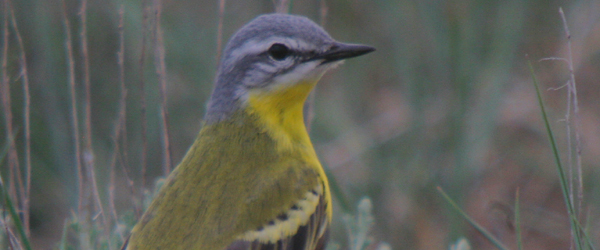











Of course, we British (to steal a phrase from a non-PC sit-com from the 1970s) like to think of our good old Motacilla flava flavissima as the real Yellow Wagtail. After all, flavissima does mean ‘most yellow’, if I am not mistaken… It may not be the nominate, and it may be the least exciting, but it is ours! At least the story was relatively simple in Kazakhstan, with only a few ‘subspecies’ to wrestle with. I spent a week or so on the Red Sea coast of Egypt in April and our hotel complex had hundreds of migrant Yellow Wags heading back to Europe/Asia from their African wintering grounds and coming through to feed, rest and roost each day. They displayed far more range of head gear than is illustrated in any book I have seen. It is, in a nutshell, confusing.
@Mike: let me (as one of “us Germans”) assure you that flavissima is by far NOT the least exciting.
@Corey: most of your pictures look very much like beema to me (Sykes’). If I saw a Yellow Wagtail with that much white in Germany, I’d get really nervous, it would stand out at least somewhat and subtly amongst our flavas. The fifth picture from above however could easily go unnoticed here in Germany amongst a flock of flavas. I am sorry to tell you that this alone does not make it a flava and I cannot go any further without having actually seen the bird myself, but if flava does indeed occur in Kaz with any frequency (does it? it seems a bit far to the east for me, I’ll have to go check my books), that might be one.
The second wagtail from below is a tricky one as it is a female. The head patter looks okay for a female thunbergi, and the dark neclace is also rather indicative of that (sub)species. But again, and especially with a female, I can’t say anything for certain unless I get to see the bird myself, which is unlikely to happen just now. But my best guess now and here, without my books or any read-up, would be female thunbergi. So that would mean you (probably) saw three SPECIES of Yellow Wagtail, yes I am a strong supporter of their split, very passionately so!
By the way: you haven’t mentioned Yellow-backed Wagtail (Motacilla lutea). Did you not see it, a form European birders are as excited about as they are about Black Larks?
Here the White Wagtail is the most common but I was lucky enough to see a Yellow Wagtail for the first time in my life not long ago. I didn’t get any good shots but I’m still happy, and I keep going back to the area in the hope of getting a better chance. =)
@Mike: Remind me never to to go the Red Sea coast while wagtails are migrating.
@Jochen: Yellow-backed!?!?! I either did not see one or did not realize it if I did. And if European birders would have been excited about it then I would have heard if it had been seen. According to The Birds of Kazakhstan (which calls it Yellow-headed Wagtail, by the way, just to be confusing) it is a “Rare breeding migrant”. Also according to the same book, Motacilla flava (which is called Blue-headed Wagtail in the book), is a “Common breeding and passage migrant” and Black-headed Wagtail (Motacilla feldegg) is a “Common breeding migrant” though, so far as I know, I didn’t see any.
So I think you Europeans need to get your names and stories straight if you want us poor unprepared Americans to have a chance!
@Sanna: Just don’t try to figure out what kind of Yellow Wagtail it is!!!
The problem is that different forms were treated differently by different authorities in different countries at a different time, so there was a lot of splitting, lumping, re-splitting, re-lumping, re-re-splitting and so on.
For example, feldegg and lutea were often split from the other groups with all the remaining forms together forming the Yellow Wagtail. Which may or may not explain your comment.
In Sanna’s case, it is more simple: in Sweden, it is either thunbergi or flava or really, really rare.
Wonderful shots, amazing how still the bird hold to be able to get such clrear shots. The Australian wagtail is blask and white and so constantly mobile it is almost impossible to get a good shot.
Nice photos…I am not even going to begin to understand all this wagtail talk..I am having a hard enough time with the US birds..tee hee.
Seriously, though.
Thanks for the info and nice photos!
Hi corey, sorry to not comment sooner. I had looked just after you posted it but I decided to bow to the superior knowledge of Jochen. I did spend some time getting to know the various races but then the ball zup that Jochen referred to ended up with me throwing my [little] hands up in the air. I will leave that for another day.
Jochen is in western Russia at the moment so I dare say he is likely to hook up with some of the birdies we picked up in Kazk… I wonder if he will ever blog about it 😉
@Jochen: Well, though you made it more complicated it makes more sense. If that makes any sense.
@Dale: It’s ok, Jochen more than covered for everyone!
@Arija and Dawn: Thanks!
Wagtails and especially Yellow Wags are a pain in the behind 😉
I still have one, nobody seems to be able to or willing to identify.
Mpf.
And I was just doing that, googling for more Info, which I know isn’t really there.
But at least I found the Kazakhstan Site now via you and I know that there are two accepted Yellow Wag species.
Didn’t know that either 😉
Lucky you to get the trip sponsored 😀